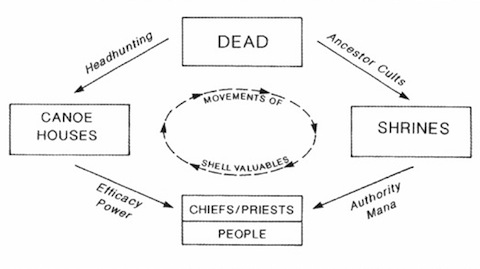
The ruins on Nusa Roviana, an island off the coast of New Georgia, include a baker’s dozen worth of skull shrines. These mystical fixtures were vital to the political structure of Nusa Roviana’s society, which centered on all-powerful chiefs who claimed an ability to communicate with deceased ancestors.
But the islands’ inhabitants were not only interested in preserving their forebears skulls; they were also enthusiastic headhunters who believed it imprudent to proceed with any major endeavor without securing a fit offering for the gods. A British anthropologist described the community’s headhunting zeal in 1899—as well as the raiders near total disregard for formal rules of engagement:
No canoe-house can be completed and no canoe launched with a head being obtained. They make long voyages in their large tomakos, or head-hunting canoes, for the purpose of securing heads, the chief hunting-ground at the present time being the two island of Choiseul and Isabel, ninety to one hundred miles away, which, however, are becoming somewhat “worked out.” The basest treachery is often employed. They will at times visit a village as friends, and, after staying for a day or two, at a given signal turn upon their hosts, and either kill them or take them alive. Such a case occurred while I was at Rubiana. At other times they will surprise or cut off a party fishing on the reef, and no matter whether they are men, women, or children, the heads count. The heads, after being slightly smokes, are stuck up along the rafters of the roof in the canoe-houses, and I have myself counted thirteen recent heads in a house in Sisieta.
More on the purpose of skull accumulation on Nusa Roviana here.


Like gas stations in rural Texas after 10 pm, comments are closed.